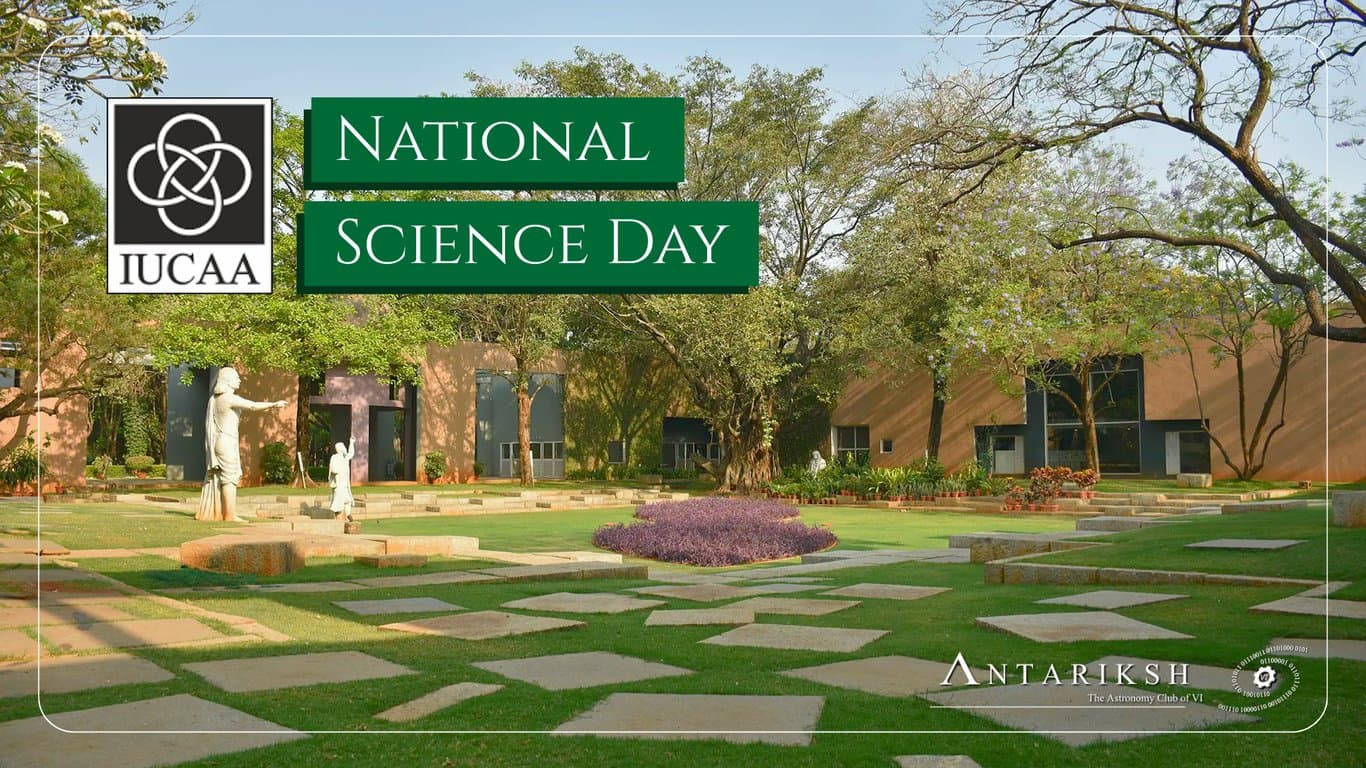Date: August 23, 2024
Time: 1:30 PM - 4:00 PM
Location: Vishwakarma Vidyalaya , Bibewadi, Pune.
Conducted by: Antariksh - Astronomy Club of VI
Members: Shravya Bhandary , Prajakta Joshi , NISHANT PATIL , Lavanya Saindane , Shreya Gade .
Target Audience: 120 students.

Event Overview
On August 23, 2024, the Antariksh Club of VI hosted a captivating National Space Day Event at Vishwakarma Vidyalaya . Held from 1:30 PM to 4:00 PM, the event aimed to immerse class 9 students in India’s space exploration journey, inspire them with the wonders of space science, and provide insights into future opportunities in the field.
Event Highlights
1. Welcome and Introduction
The event commenced with NISHANT PATIL , enthusiastically welcoming the students, setting the tone for an exciting journey into India’s Space Odyssey. He introduced the basics of astronomy and its relevance in everyday life, highlighting how ancient references influenced the names of days and months and impacted agricultural practices.

@Nishant explaining the Ancient Indian Astronomy
2. Ancient Indian Space Pioneers
The spotlight then shifted to ancient India’s contributions to space science. The pioneering work of Aryabhatta and Jai Singh II was discussed, showcasing India’s deep-rooted astronomical history.
3. Foundation of ISRO
Shreya Gade took the stage to elaborate on “The Foundation of ISRO.” She discussed how Dr. Vikram Sarabhai established INCOSPAR, which eventually evolved into ISRO. The conversation also covered Satish Dhawan, the third chairman of ISRO, whose leadership was crucial during challenging times.

@Shreya Explaining the ISRO and its major Roles
4. India’s Rocket History
Sahil Sawant shared the story of India’s first rocket launch, including the “cycle story,” where rocket components were transported by bicycle due to limited resources. He also covered the launch of Aryabhatta, India’s first satellite, by a Soviet Union rocket. A video clip from Rocket Boys illustrated the manual ignition of rockets, adding a personal touch to the technological achievements.

@Sahil explaining the starting days of Indian Space missions
5. Satellite Launch Vehicles
Sujal Malapure presented on India’s indigenous satellite launch vehicles: SLV, PSLV, and GSLV. He highlighted PSLV’s transformative role in ISRO’s missions, including Chandrayaan and Mangalyaan. Sujal introduced Dr. A.P.J. Abdul Kalam, showcasing his perseverance through a Rocket Boys video and inspiring students with the lesson “Where there is a will, there is a way.”
6. Nambi Narayanan’s Contributions
The session featured Nambi Narayanan, the mastermind behind the Vikas engine, essential for PSLV’s success. Sujal shared Narayanan’s journey, including his studies at Princeton and his contributions to Cryogenic Technology.

@Sujal explaining the contributions of 2nd Generation Space Missions
7. Rover Demonstration
A rover built using Arduino was demonstrated to the students, capturing their attention and showcasing practical applications of space technology.

@Sujal explaining how Rovers work
8. Interactive Q&A and Trivia
Lavanya Saindane engaged the students with a trivia question: “Saare Jahan Se Accha was said by whom and to whom?” The students eagerly answered “Rakesh Sharma to Indira Gandhi.” Lavanya then introduced Rakesh Sharma, India’s first astronaut, and discussed Kalpana Chawla and Sunita Williams, highlighting their contributions to space exploration.

@Prof. Dr. Medha Wyawahare addressing the students
9. Chandrayaan Missions
Lavanya continued with the story of Chandrayaan-1, which discovered water on the moon, and Chandrayaan-2, which, despite the lander’s failure, had a successful orbiter. She highlighted Chandrayaan-3’s soft landing and the orbiter’s message, “Welcome, buddy,” symbolising the collaborative success of these missions.
10. Interplanetary Missions
Lavanya introduced Mangalyaan, India’s Mars Orbiter Mission, which successfully entered Mars’ orbit in 2014, and Aditya-L1, India’s mission to study the Sun. She explained how Aditya-L1 aims to provide crucial data on solar activities and their impact on space weather.
11. Future Missions and Opportunities
The event concluded with a preview of Gaganyaan, ISRO’s potential crewed space mission, leaving students in awe of future possibilities. Prajakta Joshi presented ISRO’s educational opportunities and encouraged students to consider careers in space science. Sahil addressed questions on aliens and intergalactic travel, sparking lively discussions.

@Prajakta explaining the future of Indian Space and Opportunities
12. Club Introduction and Inspiration
After the presentations, the Antariksh Club introduced itself, shared its work, and invited students to join. The club emphasised the theme “The sky is not the limit when humans have reached the moon,” inspiring students to pursue their dreams and contribute to space science.

@Sahil explaining the Telescope- Eyes to greater Space
13. Questionnaire and Gratitude
A lot of questions were asked to the team members by the students, unbelieveable of their ages and background. Few questions being asked were:
Why cant a satellite be sent to Black Hole?
How can we see colourful images of various Galaxies
Inspired by the deep imagination and passion towards science and Astronomy, Antariksh also presented a small token to 2 children from the batch.

@Lavanya congratulating the winners and budding Scientists.
Conclusion:
The National Space Day carries our gratitude of every Indian towards the Indian Space Program and to the contributions of ISRO - Indian Space Research Organization . And, on 23rd August 2024, Antariksh celebrated its first Space Day along with millions of other Indians, to instill the Scientific Literacy in the Indian Youth. Finally, a ignition of Science has been lit in hearts of School Children, who might become the next Kalpana Chawla or Dr. A.P.J. Abdul Kalam.



